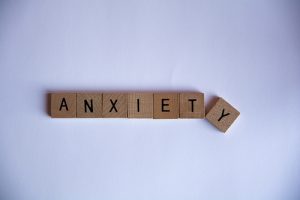
By: Practical Cures
Anxiety is a common emotion, often accompanied by physical feelings of nervousness. These feelings urge us to escape or avoid a seemingly threatening situation. Mild anxiety can be useful in helping individuals avoid a seemingly threatening situation. It can also be useful when it helps people meet the challenges of uncertain experiences. For example, delivering a speech or performing. Anxiety becomes a problem when it consistently interferes with normal life. It also become a problem when it occurs in response to objects or situations that are not dangerous or in response to nothing at all. Recognized Anxiety Disorders today encompass several mental disorders. Mental health professionals typically recognize six general types of anxiety disorders, including phobias, social anxiety disorder, panic disorder, generalized anxiety disorder, obsessive-compulsive disorder, and post-traumatic stress disorder.
Generalized Anxiety Disorder is characterized by chronic and excessive worry surrounding various aspects of an individual’s everyday life. These individuals suffer from repeated experiences of mild to severe fear or dread, which may arise with or without a situational trigger. This fear or dread can lead to emotional distress and disability.
Phobias involve strong excessive fear and avoidance of specific objects or situations that pose little or no threat. Common phobic objects and situations include certain animals, heights, water, and enclosed spaces.
Social anxiety disorder is an excessive fear and avoidance of certain social situations. Individuals with this disorder unrealistically fear they may be embarrassed, humiliated, or otherwise negatively judged by others.
Panic disorder is characterized by sudden surges of fear, or panic attacks. They occur unexpectedly and without apparent reason.
Individuals with obsessive-compulsive disorder experience intrusive, unwanted, and repeated fearful thoughts, images, or impulses. These ideas are called obsessions. The sufferer may find obsessions extremely distressing even while recognizing that they are highly unrealistic. Many OCD sufferers feel compelled to also engage in compulsions. Compulsions are mental or behavioral rituals that they feel help relieve the anxiety.
Post-traumatic stress disorder (PTSD) involves a distressing and disabling response to experiencing a trauma. Sufferers of PTSD experience intrusive uncontrollable recollections of the trauma in the form of nightmares or flashbacks. In a flashback, the person re-experiences the trauma while awake.

By: Jamie
Much like when treating any other disease or disorder, best course of treatment for anxiety disorders is highly individualized to each person suffering these conditions. Less aggressive interventions may be suitable for one individual with generalized anxiety disorder, where another with the same form of disorder may need more than one intervention to manage their disorder.
Medication management of anxiety disorders is aimed at reducing the symptoms of anxiety disorders. Categories of drugs used for management of anxiety disorders include antidepressants, certain anticonvulsants, certain sedatives and low dose antipsychotics.
Cognitive-behavioral therapy involves individuals learning to recognize and change thought patterns and behaviors that lead to troublesome feelings. Dietary and lifestyle changes can also be included in this form of therapy.
Mental illness is commonly not categorized by most individuals as a true “illness” by many individuals in America today. The need for education and understanding of these types of illnesses is crucial. Many people are unaware of the effects associated with these disorders as well as the correlation between mental and physical health and well-being. The psychological and physical influence these disorders have on suffering individuals is too often misinterpreted as just being a personality trait, rather than a medical condition that calls for intervention and management.
For more information on anxiety, visit:
https://www.adaa.org/understanding-anxiety
References
Anxiety. (2016). Funk & Wagnalls New World Encyclopedia, 1p. 1.
Bal, Z. E., Solmaz, M., Aker, D. A., Akin, E., & Kose, S. (2017). Temperament and Character Dimensions of Personality in Patients with Generalized Anxiety Disorder. Journal Of Mood Disorders, 7(1), 10-19. doi:10.5455/jmood.20170214015231
Siau Pheng, L., Ong, C., Vaingankar, J. A., Siow Ann, C., Subramaniam, M., Lee, S. P., & Chong, S. A. (2017). Validity of the Associated Symptom Criteria for Generalized Anxiety Disorder: Observations From the Singapore Mental Health Study. Journal Of Nervous & Mental Disease, 205(5), 390-396. doi:10.1097/NMD.0000000000000608
Sudhir, P. M., Rukmini, S., & Sharma, M. P. (2017). Combining Metacognitive Strategies with Traditional Cognitive Behavior Therapy in Generalized Anxiety Disorder: A Case Illustration. Indian Journal Of Psychological Medicine, 39(2), 152-156. doi:10.4103/0253-7176.203128
